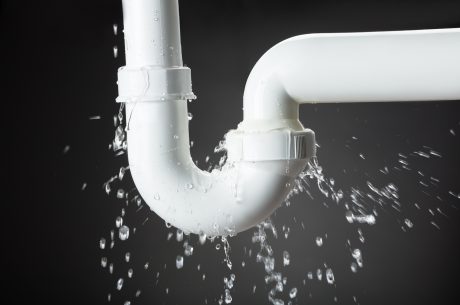How to Clean Water Supply Pipes
Water supply pipes are essential to maintaining a healthy and efficient plumbing system in your home. Over time, however, these pipes can accumulate sediment, rust, and mineral deposits, leading to reduced water pressure, discolored water, or even clogging. Regularly cleaning your water supply pipes not only improves water quality but also extends the life of your plumbing system.
In this guide, we’ll walk you through the signs that your pipes need cleaning and provide a simple, step-by-step approach to help you keep your water supply flowing smoothly. Whether you’re experiencing low water pressure or just want to maintain a cleaner water supply, learning how to clean your pipes can make a big difference!
Reasons to Clean Water Supply Pipes
1. Improved Water Quality
Over time, minerals like calcium and magnesium, as well as rust and other contaminants, can build up inside your water supply pipes. This can result in discolored or foul-smelling water. Cleaning your pipes ensures a cleaner, fresher water supply, which is crucial for drinking, cooking, and bathing.
2. Increased Water Pressure
Clogged or partially blocked pipes can reduce water flow, leading to lower water pressure in your faucets and showers. Cleaning your water supply pipes can remove these blockages and restore strong, consistent water pressure throughout your home.
3. Prolonged Pipe Lifespan
Sediment and rust buildup can corrode your pipes over time, potentially leading to leaks or bursts. Regular cleaning helps prevent this, extending the lifespan of your plumbing system and saving you money on costly repairs or pipe replacements.
4. Energy Efficiency
If your pipes are clogged, your water heater and plumbing system have to work harder to deliver hot water to your taps. By keeping your pipes clean, you reduce the strain on these systems, potentially lowering your energy bills and making your home more eco-friendly.
5. Prevention of Blockages
In extreme cases, sediment buildup can completely block a pipe, causing major plumbing issues like backups or flooding. Cleaning your pipes helps prevent such blockages, ensuring the smooth flow of water throughout your home.
6. Cost Savings
Routine maintenance like pipe cleaning can help you avoid larger, more expensive plumbing problems in the future. Keeping your pipes clear can prevent the need for emergency repairs, water damage restoration, and even pipe replacement.
How to Clean Water Supply Pipes in Your House
Cleaning your water supply pipes may seem like a daunting task, but with the right approach, you can easily maintain clean, free-flowing pipes. Below is a step-by-step guide on how to clean your water supply pipes at home:
1. Turn Off the Main Water Supply
Before starting any cleaning, you must turn off the water supply to your home. This is typically done by shutting off the main valve, which is usually located near the water meter or where the main water line enters your house.
2. Drain the Water From the Pipes
Once the water is off, open all the faucets in your home to allow any remaining water in the pipes to drain out. This step ensures the pipes are empty and ready for cleaning. You may want to start from the highest faucet (e.g., second-floor bathroom) and work your way down to the lowest point (e.g., basement or first-floor faucet).
3. Mix a Cleaning Solution
You can use a solution of vinegar and baking soda to naturally clean your pipes. Alternatively, you can purchase a commercial pipe-cleaning solution designed for removing mineral buildup and sediment from plumbing systems. Avoid using harsh chemicals, as they can corrode your pipes over time.
4. Add the Cleaning Solution to the Pipes
Once the pipes are drained, pour your cleaning solution into the pipes through a faucet or hose bib. Be sure to use enough solution to treat the entire length of the affected pipes.
5. Let the Solution Sit
After adding the cleaning solution, let it sit in the pipes for at least an hour, but longer for pipes with heavy buildup. This allows the solution to break down the deposits of rust, sediment, and mineral buildup inside the pipes.
6. Flush the Pipes
After the cleaning solution has done its job, turn the water back on and allow it to run through the pipes for several minutes. Open all the faucets again to flush out any remaining solution and debris. Let the water run until it is clear and free of sediment.
7. Check for Improvements
Once you’ve flushed the system, check the water pressure and quality to ensure the cleaning has been effective. If the water pressure has improved and the water is clearer, your pipes are clean. If not, you may need to repeat the process or contact a professional plumber for assistance.
8. Maintain Regular Cleaning
To prevent future buildup, clean your pipes periodically—especially if you live in an area with hard water. Routine cleaning can help keep your water supply fresh and your plumbing system functioning efficiently.
Regularly cleaning your water supply pipes is an important step in maintaining a healthy, efficient plumbing system. Not only does it improve water quality and pressure, but it also extends the life of your pipes and helps you avoid costly repairs in the future.
By following the steps outlined in this guide, you can take proactive control of your home’s water supply and ensure clean, fresh water flows through your taps. Make pipe cleaning part of your regular home maintenance routine, and enjoy the benefits of a well-functioning plumbing system for years to come!




 PuroClean Emergency Recovery Services
PuroClean Emergency Recovery Services